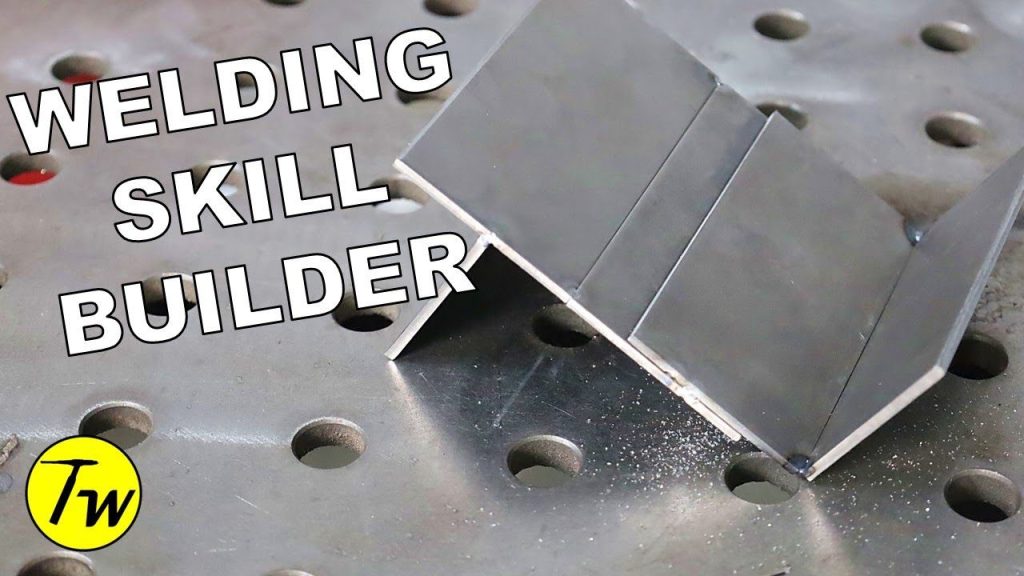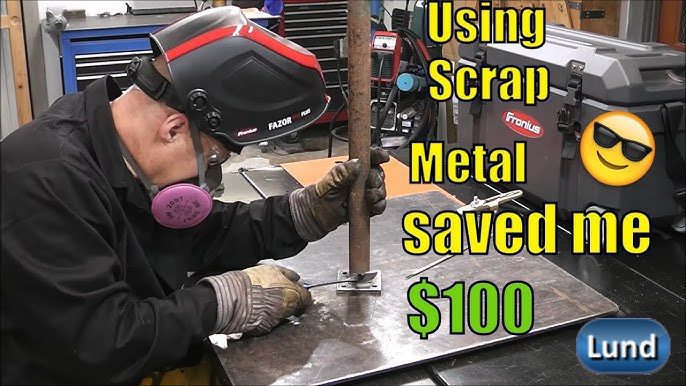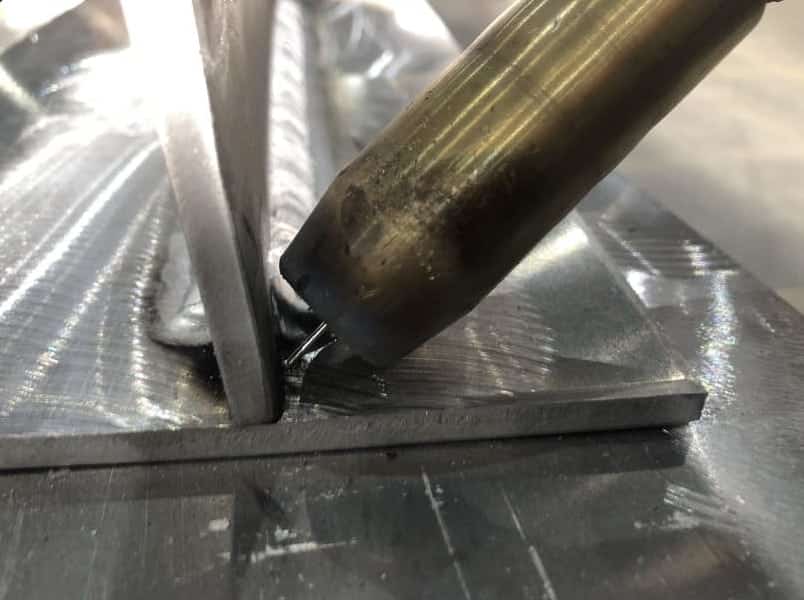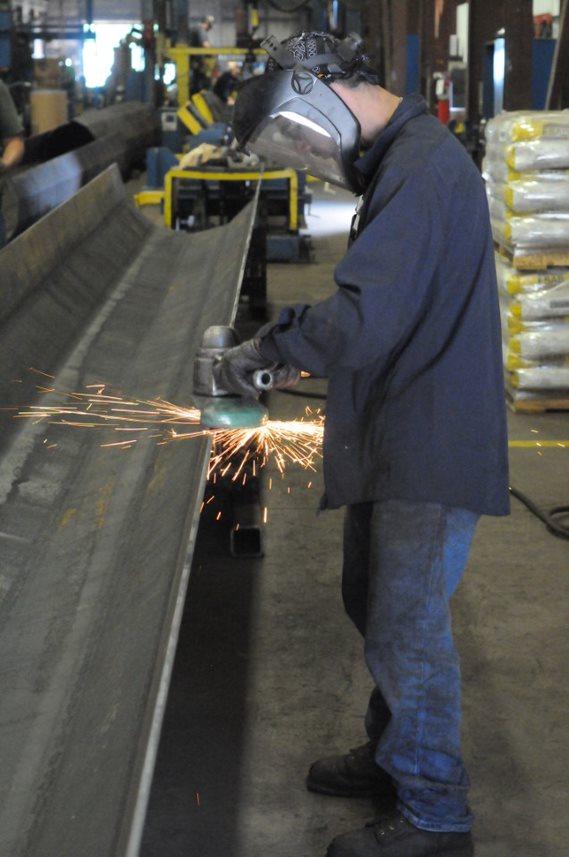If you’re eager to become a skilled welder but concerned about the cost of wasting materials during the learning process, worry no more! Finding ways to practice welding without squandering precious resources is not only possible but also incredibly beneficial. By exploring alternative approaches like using scrap metal, focusing on smaller projects, or seeking out welding schools with practical training options, you can hone your welding skills effectively while minimizing material waste. Get ready to ignite your passion for welding without burning a hole in your wallet!
Choosing the Right Practice Materials
Understanding the Different Types of Welding Joints
When it comes to practicing welding, understanding the different types of welding joints is crucial. Each welding joint requires a specific technique and approach, and practicing on different types of joints will help you develop your skills and versatility as a welder. Some common types of welding joints include butt joints, lap joints, corner joints, and T-joints. By familiarizing yourself with these joints and practicing on them, you will build a solid foundation for your welding skills.
Using Scrap Metal
One cost-effective and sustainable way to practice welding is by using scrap metal. Visit your local metal recycling center or salvage yard and ask if they have any scrap metal pieces that you can purchase or have for free. Using scrap metal not only allows you to practice welding techniques but also gives you the opportunity to repurpose and recycle materials that might otherwise go to waste. Start with smaller and simpler projects using scrap metal, then gradually progress to more complex welding tasks as you gain confidence and experience.
Opting for Simulated Welding Kits
If you want to practice welding but don’t have access to scrap metal or are concerned about wasting materials, simulated welding kits can be an excellent alternative. These kits are designed to replicate the experience of welding without using real metal. They typically include welding tools and practice materials that mimic the behavior of metal during the welding process. Simulated welding kits allow you to practice various welding techniques and hone your skills without the need for costly or wasteful materials.
Preparing Your Practice Area
Clearing the Area of Flammable or Dangerous Materials
Before you begin practicing welding, it is crucial to ensure that your practice area is free from any flammable or dangerous materials. Remove any clutter, debris, or items that are susceptible to catching fire or exploding. This includes highly flammable substances such as gasoline, propane, and other hazardous chemicals. Creating a clean and safe practice area will significantly reduce the risk of accidents or injuries during your welding practice sessions.
Setting Up a Safe and Well-Ventilated Workspace
Creating a safe and well-ventilated workspace is essential when practicing welding. Adequate ventilation is crucial for removing fumes, gases, and smoke generated during the welding process. Ensure that your practice area has proper ventilation systems, such as fans or exhaust hoods, to keep the air clean and prevent the buildup of hazardous substances. Additionally, make sure your workspace is well-lit and organized, allowing for easy access to your tools and equipment.
Securing Proper Personal Protective Equipment (PPE)
Before you begin practicing welding, it is vital to prioritize your safety by wearing appropriate personal protective equipment (PPE). This includes a welding helmet with a darkened lens to protect your eyes from the intense light and harmful rays produced during welding. Additionally, invest in a pair of welding gloves, a flame-resistant jacket, and pants to shield yourself from sparks, splatter, and burns. Don’t forget to wear steel-toed boots to protect your feet from falling objects or heavy equipment. Always prioritize safety and never compromise on wearing proper PPE.
Acquiring Simulator or Virtual Reality Tools
Exploring the Use of Welding Simulators
Welding simulators are advanced training tools that provide a realistic simulation of the welding process. These simulators often come with a welding torch, a computer screen or virtual reality headset, and a variety of virtual welding tasks to practice on. They provide valuable feedback on your technique, speed, and position, allowing you to identify areas for improvement. Using welding simulators can help you enhance your skills and muscle memory before moving on to real welding tasks.
Using Virtual Reality (VR) Welding Technology
Virtual reality (VR) welding technology takes the concept of welding simulators to the next level. With VR welding, you can immerse yourself in a virtual environment and practice welding on various virtual materials and structures. VR welding technology offers a highly realistic and interactive experience, allowing you to practice different welding techniques and challenges. By using VR welding technology, you can gain valuable experience and confidence without using any physical materials or supplies.
Finding Affordable Welding Classes or Workshops
Researching Local Community Colleges or Trade Schools
If you’re looking to receive formal training in welding, researching local community colleges or trade schools can be a great starting point. These educational institutions often offer affordable welding courses and programs for individuals at different skill levels. Look for classes that cater to beginners or hobbyists and inquire about any financial aid or scholarships that may be available. Attending classes at a community college or trade school gives you access to professional instructors, hands-on training, and the opportunity to connect with other aspiring welders.
Attending Welding Workshops or Events
Welding workshops and events are another excellent option for finding affordable and practical training opportunities. These workshops are often hosted by experienced welders or welding organizations and provide a platform for learning and networking. Look for local welding workshops or events in your area and consider attending them to expand your knowledge and skills. Workshops may focus on specific techniques, tools, or industry trends, giving you valuable insights and hands-on experience.
Exploring Online Welding Courses
In today’s digital age, online learning has become increasingly popular and accessible. When it comes to finding affordable welding classes, exploring online courses can be a convenient option. Many reputable organizations and platforms offer online welding courses that cover a wide range of topics, from basic welding techniques to specialized welding processes. Online courses often provide video tutorials, interactive quizzes, and the flexibility to learn at your own pace. Look for online courses that are comprehensive, reputable, and offer support from qualified instructors.
Utilizing Welding Practice Coupons
Understanding the Purpose of Welding Coupons
Welding coupons are small test pieces of metal used to practice welding techniques and evaluate the quality of welds. These coupons are specifically designed to simulate real-world welding scenarios and provide a standardized method for testing and improvement. By practicing with welding coupons, you can refine your skills, test new techniques, and evaluate the strength and integrity of your welds. Understanding the purpose and value of welding coupons can help you make the most of your practice sessions.
Exploring the Various Types of Welding Coupons
There are various types of welding coupons available, each designed for specific purposes and welding processes. Common types of welding coupons include groove weld coupons, fillet weld coupons, plug weld coupons, and bend test coupons. Groove weld coupons are used to practice welding in a groove joint, while fillet weld coupons are used to practice welding in a corner joint. Plug weld coupons simulate welding holes, and bend test coupons are used to evaluate the ductility and strength of welds. Exploring and using different types of welding coupons allows you to diversify your practice and gain experience with various welding scenarios.
Finding Welding Coupons for Practice
Welding coupons can be purchased from welding supply stores, online retailers, or directly from manufacturers. Look for welding coupons that match the specific welding processes or joints you want to practice. Some suppliers offer discount codes or promotions that can help you find affordable welding coupons. Additionally, consider reaching out to local welding schools or organizations to inquire about any available resources or discounted coupons for practice. Getting your hands on a variety of welding coupons will provide you with ample opportunities to enhance your welding skills.
Networking with Experienced Welders
Joining Welding Associations or Groups
One of the best ways to enhance your welding skills and expand your professional network is by joining welding associations or groups. These organizations bring together welders of all levels of expertise and provide a platform for networking, sharing knowledge, and learning from experienced professionals. By joining a welding association or group, you can connect with like-minded individuals, attend educational events, and gain insights into the welding industry. Building relationships with experienced welders can open doors to mentorship opportunities and valuable advice that can further elevate your welding abilities.
Volunteering or Apprenticing with Professional Welders
Another effective way to learn from experienced welders is by volunteering or apprenticing with professional welders. Reach out to local welding companies, workshops, or construction sites and inquire about any volunteer or apprenticeship opportunities available. Volunteering or apprenticing allows you to work alongside skilled welders and learn firsthand from their expertise. You’ll gain practical experience, learn professional techniques, and develop a deeper understanding of the welding trade. Volunteering or apprenticing with professional welders is an invaluable opportunity to learn from the best while also making meaningful connections in the industry.
Attending Welding Trade Shows or Conferences
Welding trade shows and conferences are excellent platforms for networking with experienced welders and staying up to date with the latest industry trends and technologies. These events often feature exhibitions, demonstrations, and educational seminars conducted by industry experts. Attending welding trade shows or conferences gives you the opportunity to explore new welding equipment, techniques, and materials. Additionally, it allows you to connect with professionals, ask questions, and learn from their experiences. Make sure to actively participate in these events and engage with fellow attendees for a well-rounded networking experience.
Experimenting with Different Welding Techniques
Practicing Various Welding Positions
Welding positions refer to the different orientations in which welding can be performed. Some common welding positions include flat position, horizontal position, vertical position, and overhead position. Each welding position presents unique challenges and requires specific techniques. Practicing welding in different positions helps you adapt to various scenarios and increases your versatility as a welder. Set aside time to practice each welding position and experiment with different techniques to become comfortable and proficient in all of them.
Trying Different Welding Processes
Welding encompasses a wide range of processes, each suitable for different applications and materials. By trying out different welding processes, you can expand your skillset and gain expertise in diverse welding techniques. Some common welding processes include MIG welding, TIG welding, stick welding, and flux-cored arc welding. Each process has its advantages and challenges, and practicing different processes will help you understand their nuances. Invest time in exploring and experimenting with different welding processes to become a well-rounded and adaptable welder.
Exploring Different Welding Materials
Welding can be performed on various materials, including steel, aluminum, stainless steel, and cast iron. Each material behaves differently during the welding process and requires specific techniques and settings. By exploring different welding materials, you can broaden your knowledge and expertise in working with diverse materials. Experiment with welding different metals and alloys to understand their unique properties and challenges. Practicing on various materials will make you more versatile and confident in tackling a wide range of welding projects.
Utilizing Welding Practice Aids
Using Welding Practice Kits or Stations
Welding practice kits or stations can be valuable tools to enhance your welding skills. These kits are specifically designed for practice and often include plates or materials that closely resemble real welding scenarios. Practice kits typically come with detailed instructions, allowing you to focus on refining your technique and precision. Some practice stations also feature adjustable fixtures and clamps to simulate complex welding positions. Using welding practice kits or stations enables you to practice in a controlled and realistic environment, helping you build muscle memory and improve overall welding proficiency.
Investing in Welding Training Aids
Welding training aids are devices or tools that assist in learning and practicing specific welding techniques. These aids are designed to provide guidance and support during the welding process, offering a hands-on learning experience. For example, magnetic guides can assist in maintaining proper welding angles and distances, while heat-resistant welding mats prevent workpieces from warping. Welding training aids can be used in conjunction with real welding tasks or even with simulated welding materials. By investing in these aids, you can refine your technique and overcome common challenges, leading to improved welding skills.
Exploring Welding Training Apps or Software
In today’s digital age, there is an abundance of training apps and software available to support and enhance your welding practice. These apps and software provide interactive tutorials, simulations, and even virtual welding environments. They offer a convenient and accessible way to learn and practice welding skills, particularly for individuals who prefer self-paced learning. Some apps and software also allow for progress tracking and performance evaluation, providing insights to help you identify areas for improvement. Explore available welding training apps or software to find the ones that best suit your learning style and practice needs.
Practicing Welding on Disassembled Components
Sourcing Second-Hand or Salvaged Components
Practicing welding on disassembled components can be an effective way to apply your skills and gain hands-on experience. Look for second-hand or salvaged components that require welding repairs or modifications. Local salvage yards, scrapyards, or online platforms can be excellent sources for finding such components at affordable prices. By practicing on disassembled components, you can challenge yourself with real-world welding scenarios and develop problem-solving skills. It’s important to note that the safety and integrity of the components should always be ensured before starting any welding projects.
Disassembling and Reassembling Welded Structures
Disassembling and reassembling welded structures is another practical way to practice welding without wasting materials. Seek out used or donated welded structures such as furniture, gates, or handrails. Carefully disassemble the structures, taking note of the welding techniques and joints used. Once disassembled, practice welding the components back together, ensuring strong and high-quality welds. This exercise allows you to understand how different weldments come together and how to effectively repair or modify existing structures.
Using Dismantled Machinery or Equipment
If you have access to dismantled machinery or equipment, it can provide an excellent opportunity to practice welding. Focus on the areas that require welding repairs or modifications, and apply your skills accordingly. Welding on dismantled machinery allows you to experience welding in a real-world context and understand how welding fits into the overall repair or maintenance process. Whether it’s agricultural equipment, automotive parts, or industrial machinery, practicing on dismantled components helps you become proficient in specific welding applications and gain firsthand experience.
Scheduling Regular Practice Sessions
Setting Aside Dedicated Time for Practice
Consistency is key when it comes to improving your welding skills. Set aside dedicated time for regular practice sessions and treat them as important appointments. Whether it’s daily, weekly, or biweekly, establish a practice schedule that works for you and commit to sticking with it. Consistent practice allows you to build muscle memory, improve technique, and continue progressing in your welding abilities. Make practice a priority and create a routine that ensures you consistently allocate time for honing your skills.
Establishing Practice Goals and Targets
To make the most of your practice sessions, establish specific goals and targets for yourself. Setting goals helps you stay motivated and focused on your desired outcomes. Your goals can include mastering a specific welding technique, improving speed and efficiency, or achieving specific certifications. Break down your overall goals into smaller milestones and track your progress along the way. Celebrate your achievements and adjust your targets as you advance. By establishing clear goals, you can measure your development and stay on track toward becoming a skilled welder.
Tracking Progress and Seeking Feedback
Regularly tracking your progress and seeking feedback is essential for ongoing improvement in welding. Keep a record of your practice sessions, noting the techniques you worked on, areas of difficulty, and any notable improvements. This allows you to review your progress over time and identify areas that require further attention. Additionally, seek feedback from experienced welders or instructors who can provide valuable insights and guidance. Constructive feedback helps you refine your skills, correct any mistakes, and ensures that you are on the right path toward becoming a proficient welder.











































